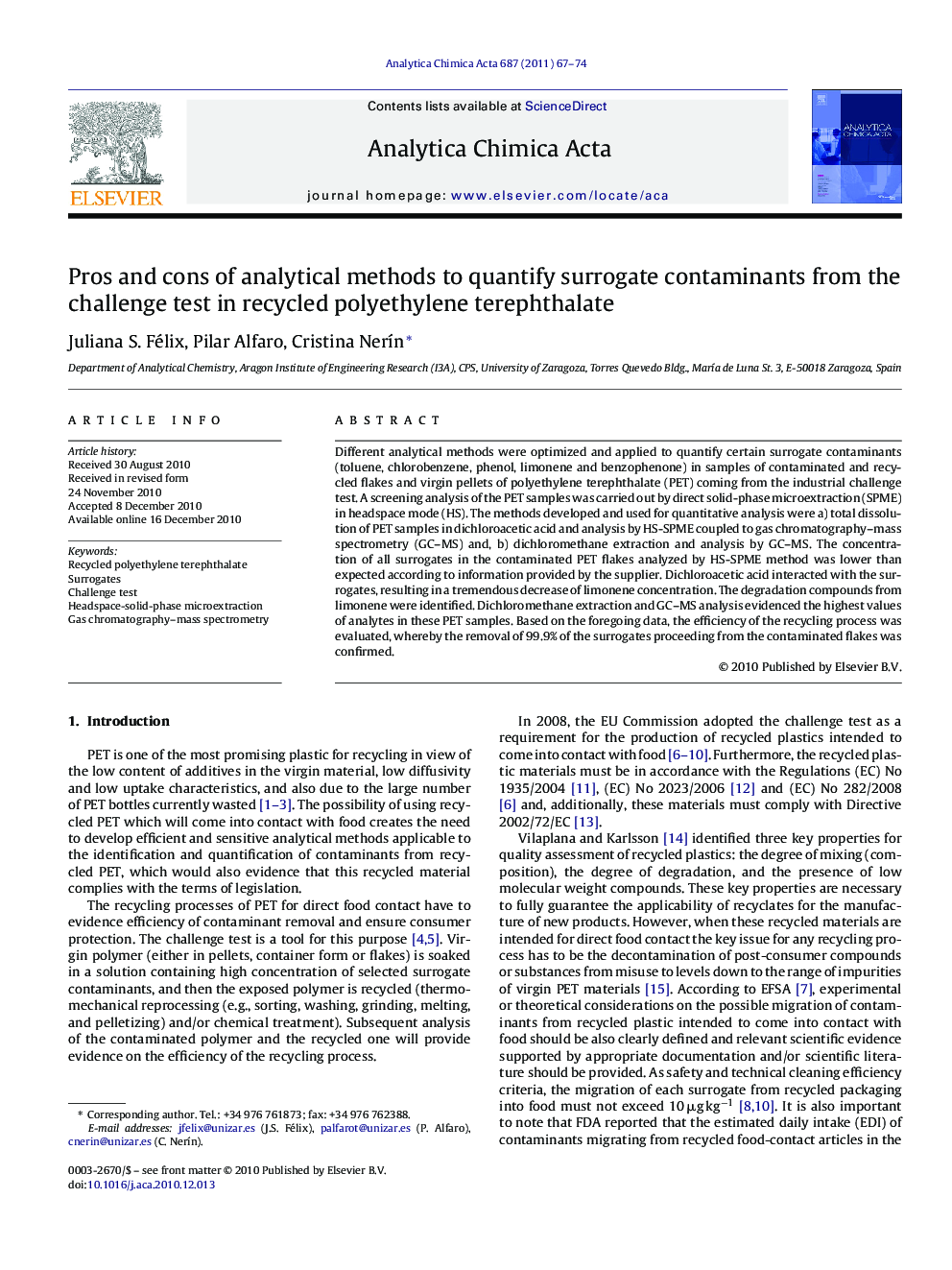| کد مقاله | کد نشریه | سال انتشار | مقاله انگلیسی | نسخه تمام متن |
|---|---|---|---|---|
| 1166455 | 960498 | 2011 | 8 صفحه PDF | دانلود رایگان |

Different analytical methods were optimized and applied to quantify certain surrogate contaminants (toluene, chlorobenzene, phenol, limonene and benzophenone) in samples of contaminated and recycled flakes and virgin pellets of polyethylene terephthalate (PET) coming from the industrial challenge test. A screening analysis of the PET samples was carried out by direct solid-phase microextraction (SPME) in headspace mode (HS). The methods developed and used for quantitative analysis were a) total dissolution of PET samples in dichloroacetic acid and analysis by HS-SPME coupled to gas chromatography–mass spectrometry (GC–MS) and, b) dichloromethane extraction and analysis by GC–MS. The concentration of all surrogates in the contaminated PET flakes analyzed by HS-SPME method was lower than expected according to information provided by the supplier. Dichloroacetic acid interacted with the surrogates, resulting in a tremendous decrease of limonene concentration. The degradation compounds from limonene were identified. Dichloromethane extraction and GC–MS analysis evidenced the highest values of analytes in these PET samples. Based on the foregoing data, the efficiency of the recycling process was evaluated, whereby the removal of 99.9% of the surrogates proceeding from the contaminated flakes was confirmed.
Journal: Analytica Chimica Acta - Volume 687, Issue 1, 14 February 2011, Pages 67–74